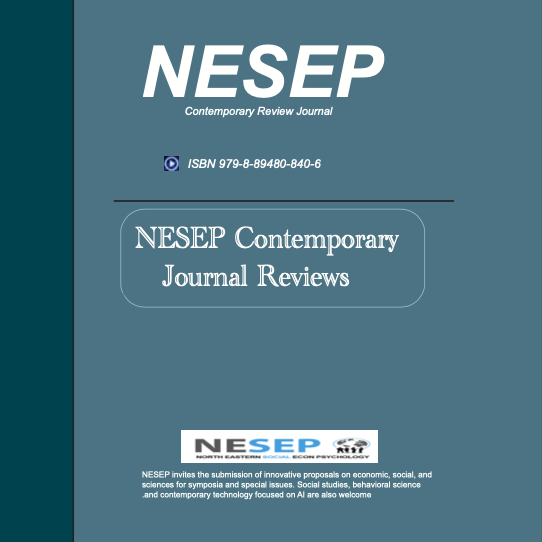Accepted Articles
We congratulate you on acceptance of your manuscript.

Annual Expo by the Journal of Young Explorers Meta and NESEP
- Fundamental or applied research
- Interdisciplinary research
- Judging on a rolling basis
- A work-in-progress research
- Completed research
- Unlimited topics and ideas
- ISBN 979-8-89480-840-6
- NESEP/NY-CSEF event at Harvard Club in NYC
Stratospheric Aerosols: Establishing a Novel Optical Thickness Benchmark for Effective Climate Change Mitigation
Abstract: Global Warming has been a problem at the heart of Earth’s environmental issues for nearly 5 decades, with the potential to affect a significant portion of the global population. Changes in Earth’s climate due to the rise in global temperatures will have an enormous impact on communities around the world, along with a drastic displacement of humans and an extreme loss in natural biodiversity. Current methods of combating this issue have proven to be ineffective, requiring a more comprehensive and innovative approach. This project aims to propose a potential solution to mitigate the effects of global warming and limit temperatures to sustainable levels through the use of stratospheric aerosols. Through a process of data collection, experimentation, and modeling, we were able to correlate the presence of aerosols in the stratosphere to a consequent drop in temperatures and utilize regression prediction to forecast a 16% drop in global temperatures after examining the effects of volcanic ash in the stratosphere. We were also able to compare monthly aerosol concentration levels to declines in the temperature growth, finding a benchmark to stabilize global temperatures. By implementing the changes to Earth’s atmosphere, we can reflect heat from the Sun and create a cooling effect for the planet.
Reference
Dykema, J. A., Keith, D. W., Anderson, J. G., & Weisenstein, D. (2014). Stratospheric controlled perturbation experiment: a small-scale experiment to improve understanding of the risks of solar geoengineering. Philosophical Transactions of the Royal Society A: Mathematical, Physical and Engineering Sciences, 372(2031), 20140059. https://doi.org/10.1098/rsta.2014.0059
Schmeisser, L., Andrews, E., Ogren, J. A., Sheridan, P., Jefferson, A., Sharma, S., Kim, J. E., Sherman, J. P., Sorribas, M., Kalapov, I., Arsov, T., Angelov, C., Mayol-Bracero, O. L., Labuschagne, C., Kim, S.-W., Hoffer, A., Lin, N.-H., Chia, H.-P., Bergin, M., & Sun, J. (2017). Classifying aerosol type using in situ surface spectral aerosol optical properties. Atmospheric Chemistry and Physics, 17(19), 12097–12120. https://doi.org/10.5194/acp-17-12097-2017
Ramanathan, V. (2001). Aerosols, Climate, and the Hydrological Cycle. Science, 294(5549), 2119–2124. https://doi.org/10.1126/science.1064034
Moriyama, R., Sugiyama, M., Kurosawa, A., Masuda, K., Tsuzuki, K., & Ishimoto, Y. (2016). The cost of stratospheric climate engineering revisited. Mitigation and Adaptation Strategies for Global Change, 22(8), 1207–1228. https://doi.org/10.1007/s11027-016-9723-y
Haywood, A.M., H.J. Dowsett, B. Otto-Bliesner, M.A. Chandler, A.M. Dolan, D.J. Hill, D.J. Lunt, M.M. Robinson, N. Rosenbloom, U. Salzmann, and L.E. Sohl, 2010: Pliocene Model Intercomparison Project (PlioMIP): Experimental design and boundary conditions (Experiment 1). Geosci. Model Dev., 3, 227-242, https://doi.org/10.5194/gmd-3-227-2010
Robock, Alan. “Volcanic Eruptions and Climate.” Reviews of Geophysics, vol. 38, no. 2, May 2000, pp. 191–219, https://doi.org/10.1029/1998rg000054
Madronich, S., et al. “Changes in Biologically Active Ultraviolet Radiation Reaching the Earth’s Surface.” Journal of Photochemistry and Photobiology B: Biology, vol. 46, no. 1-3, Oct. 1998, pp. 5–19, https://doi.org/10.1016/s1011-1344(98)00182-1
Forster, P., V. Ramaswamy, P. Artaxo, T. Berntsen, R. Betts, D. Fahey, J. Haywood, J. Lean, D. Lowe, G. Myhre, J. Nganga, R. Prinn, G. Raga, M. Schulz & R. Van Dorland (2008): Changes in Atmospheric Constituents and in Radiative Forcing. Climate Change 2007: The Physical Science Basis. Contribution of Working Group I to the Fourth Assessment Report of the IPCC, S. Solomon et al. (eds.), Cambridge University Press, Cambridge, UK, Chapter 2, http://www.cambridge.org/catalogue/catalogue.asp?isbn=9780521705967
Yu, P., Toon, O. B., Bardeen, C. G., Zhu, Y., Rosenlof, K. H., Portmann, R. W., Thornberry, T. D., Gao, R.-S., Davis, S. M., Wolf, E. T., de Gouw, J., Peterson, D. A., Fromm, M. D., & Robock, A. (2019). Black carbon lofts wildfire smoke high into the stratosphere to form a persistent plume. Science, 365(6453), 587–590. https://doi.org/10.1126/science.aax1748
Global Modeling and Assimilation Office (GMAO) (2015), MERRA-2 tavgM_2d_aer_Nx: 2d,Monthly mean,Time-averaged,Single-Level,Assimilation,Aerosol Diagnostics V5.12.4, Greenbelt, MD, USA, Goddard Earth Sciences Data and Information Services Center (GES DISC), Accessed: 1/10/2023, 10.5067/FH9A0MLJPC7N
Global Aerosol Climatology Project (GACP). (2015). Aerosol thickness data. Data source: NASA Goddard Earth Sciences Data and Information Services Center website, https://gacp.giss.nasa.gov/data/time_ser/
Food and Agriculture Organization of the United Nations (FAOSTAT). (2022). Temperature change domain data. Data source: FAOSTAT website, https://www.fao.org/faostat/en/#data/ET